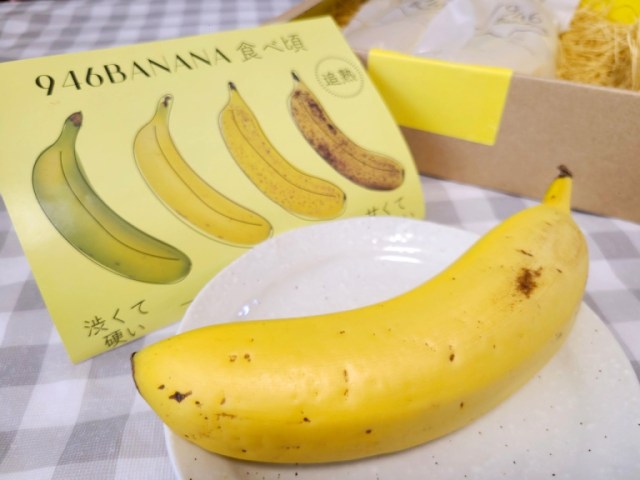
Tropical fruit from Japan’s frosty north.
Bananas aren’t rare in Japan, in the sense that you can find them in any supermarket and also just about any home, as they’re one of the most commonly eaten fruits in the country. However, bananas in Japan are super-rare in the sense that 99.98 percent of the bananas that people eat in Japan are imported.
That statistic means, though, that 0.02 percent of Japan’s bananas are domestically grown, and we were pretty shocked to learn that some of those 0.02 percent come from Hokkaido.
▼ Hokkaido
Yes, Hokkaido. Japan’s northernmost prefecture, which spends winter under a blanket of snow, and has the lowest temperature and humidity of anywhere in Japan throughout the year. But they really do grow bananas in the Hokkaido town of Kushiro, and we decided to see what they taste like.
As you might suspect, though, they don’t come cheap. Called 946 Bananas (the digits can also be read as “Kushiro” in Japanese), the price for one is 1,080 yen (US$10.40), about 20 times what an imported banana will cost you at a Japanese grocery store. Oh, and if you splurge for the box set of three bananas like we did? That’ll set you back 4,860 yen (US$50).
You do get a nice box, though, with individually wrapped bananas nestled in packing straw. The wrappers also have air holes, so that the bananas can continue to ripen during shipping.
We unwrapped one, and the first thing that struck us was the size, as the 946 Bananas are especially large.
▼ Imported supermarket banana (top) vs. 946 Banana (bottom)
But we’re not Victorian-era aristocrats buying tropical fruit for decorative purposes. Food is for feasting, and it was time to dig in!
The 946 Banana immediately makes its presence felt on your taste buds. Grown with no pesticides or chemical fertilizers, they have a powerful, but not overpowering, sweetness, which the farmers attribute to the large gap between the high and low temperatures in Kushiro. Moist and rich, our taste-testing reporter Maro was fully satisfied with the fruit.
It’s not just their region of origin that makes the 946 Bananas unique, either. They also have remarkably thin peels, so thin that you can eat them!
Just because you can, though, doesn’t necessarily mean you’ll want to, at least not raw, as Maro took a bite and found the peel to be pretty bitter. However, the peel is supposedly highly nutritious, and 946 Bananas distributor recommends leaving its bananas unpeeled if you’re tossing them in a blender to make a smoothie, or even slicing and sautéing the peels in a manner like the traditional Japanese vegetable dish kinpira gobo.
946 Bananas can be purchased through their online shop here.
Top image: SoraNews24
Insert images: SoraNews24, 946 Banana
● Want to hear about SoraNews24’s latest articles as soon as they’re published? Follow us on Facebook and Twitter!
[ Read in Japanese ]

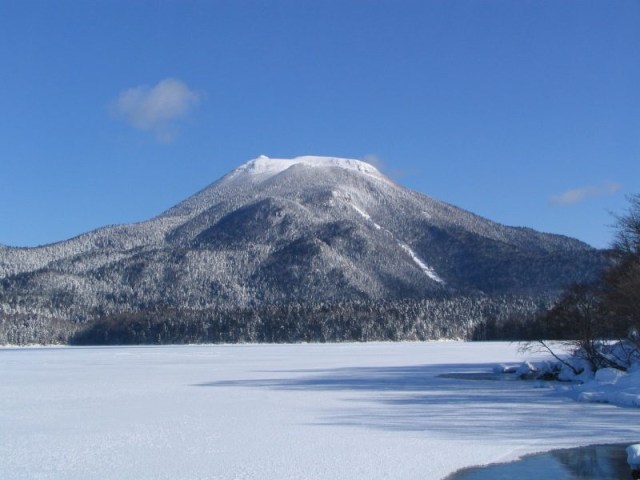
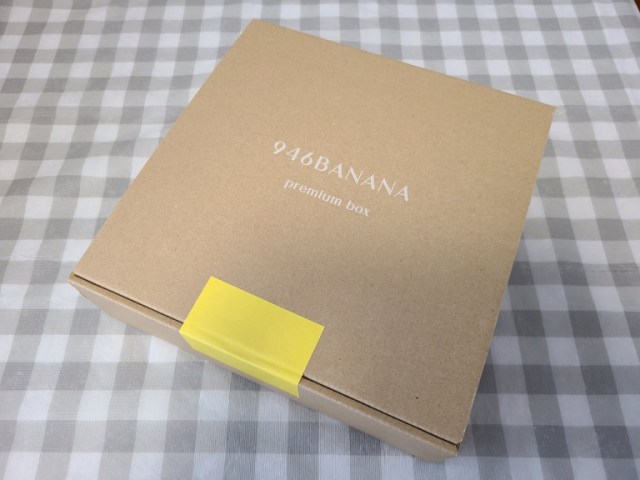
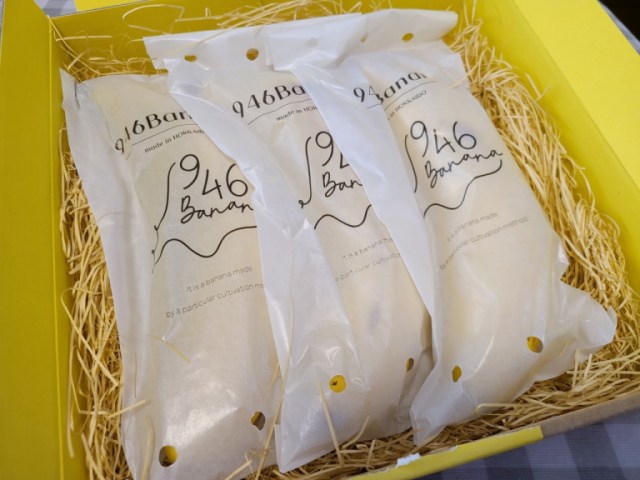
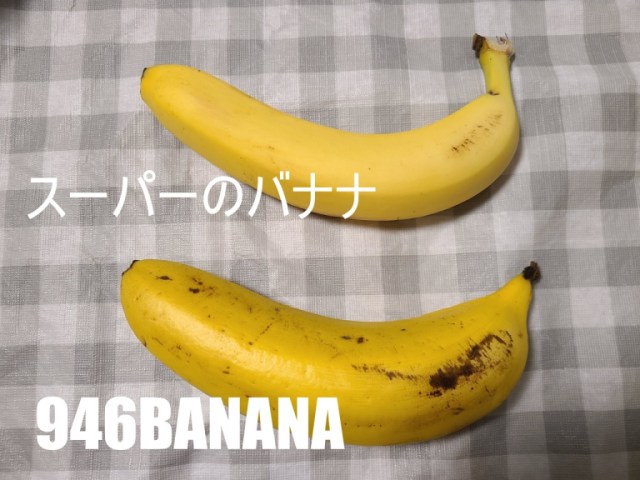
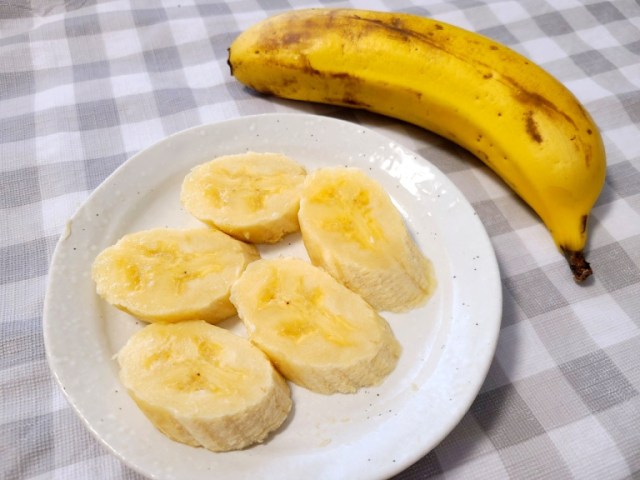
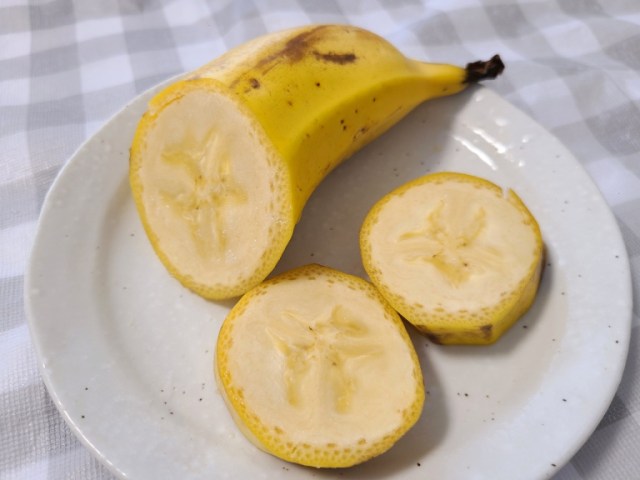
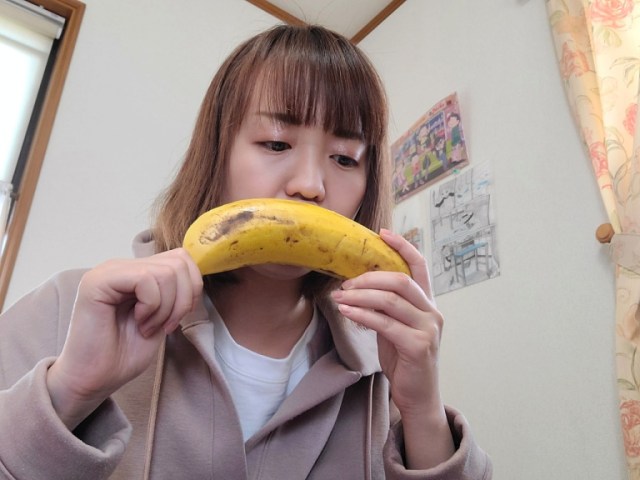

 This super-rare Japanese banana has edible skin!【Taste test】
This super-rare Japanese banana has edible skin!【Taste test】 Love banana bread? Love ice cream? You can have both with this Banana Bread Ice Cream Sandwich!
Love banana bread? Love ice cream? You can have both with this Banana Bread Ice Cream Sandwich! We’re going bananas over these amazing Attack on Titan…bananas!【Photos】
We’re going bananas over these amazing Attack on Titan…bananas!【Photos】 Tokyo Banana Curry adds capital’s souvenir sweet’s sweetness to roux, but not in Tokyo
Tokyo Banana Curry adds capital’s souvenir sweet’s sweetness to roux, but not in Tokyo Time to go bananas for McDonald’s Japan’s chocolate banana smoothie and other new treats
Time to go bananas for McDonald’s Japan’s chocolate banana smoothie and other new treats Foreigner’s request for help in Tokyo makes us sad for the state of society
Foreigner’s request for help in Tokyo makes us sad for the state of society Seaside scenery, history, and so many desserts on Yokohama’s Akai Kutsu【Japan Loop Buses】
Seaside scenery, history, and so many desserts on Yokohama’s Akai Kutsu【Japan Loop Buses】 Should you add tartar sauce to Japanese curry rice? CoCo Ichi makes diners an unusual offer
Should you add tartar sauce to Japanese curry rice? CoCo Ichi makes diners an unusual offer Ghibli Park now selling “Grilled Frogs” from food cart in Valley of Witches
Ghibli Park now selling “Grilled Frogs” from food cart in Valley of Witches Japanese city loses residents’ personal data, which was on paper being transported on a windy day
Japanese city loses residents’ personal data, which was on paper being transported on a windy day Japan’s summertime towelket pillowcases are even better with the addition of Ghibli stars【Photos】
Japan’s summertime towelket pillowcases are even better with the addition of Ghibli stars【Photos】 Akihabara pop-up shop sells goods made by Japanese prison inmates
Akihabara pop-up shop sells goods made by Japanese prison inmates Studio Ghibli glasses cases let anime characters keep an eye on your spectacles
Studio Ghibli glasses cases let anime characters keep an eye on your spectacles Red light district sushi restaurant in Tokyo shows us just how wrong we were about it
Red light district sushi restaurant in Tokyo shows us just how wrong we were about it Osaka governor suggests lowering voting age to 0 to curb population decline
Osaka governor suggests lowering voting age to 0 to curb population decline McDonald’s new Happy Meals offer up cute and practical Sanrio lifestyle goods
McDonald’s new Happy Meals offer up cute and practical Sanrio lifestyle goods Japanese ramen restaurants under pressure from new yen banknotes
Japanese ramen restaurants under pressure from new yen banknotes French Fries Bread in Tokyo’s Shibuya becomes a hit on social media
French Fries Bread in Tokyo’s Shibuya becomes a hit on social media Studio Ghibli releases new action figures featuring Nausicaä of the Valley of the Wind characters
Studio Ghibli releases new action figures featuring Nausicaä of the Valley of the Wind characters New private rooms on Tokaido Shinkansen change the way we travel from Tokyo to Kyoto
New private rooms on Tokaido Shinkansen change the way we travel from Tokyo to Kyoto Tokyo Tsukiji fish market site to be redeveloped with 50,000-seat stadium, hotel, shopping center
Tokyo Tsukiji fish market site to be redeveloped with 50,000-seat stadium, hotel, shopping center Beautiful Ghibli sealing wax kits let you create accessories and elegant letter decorations【Pics】
Beautiful Ghibli sealing wax kits let you create accessories and elegant letter decorations【Pics】 Studio Ghibli releases Kiki’s Delivery Service chocolate cake pouches in Japan
Studio Ghibli releases Kiki’s Delivery Service chocolate cake pouches in Japan New definition of “Japanese whiskey” goes into effect to prevent fakes from fooling overseas buyers
New definition of “Japanese whiskey” goes into effect to prevent fakes from fooling overseas buyers Our Japanese reporter visits Costco in the U.S., finds super American and very Japanese things
Our Japanese reporter visits Costco in the U.S., finds super American and very Japanese things All-you-can-drink Starbucks and amazing views part of Tokyo’s new 170 meter-high sky lounge
All-you-can-drink Starbucks and amazing views part of Tokyo’s new 170 meter-high sky lounge More foreign tourists than ever before in history visited Japan last month
More foreign tourists than ever before in history visited Japan last month New Pokémon cakes let you eat your way through Pikachu and all the Eevee evolutions
New Pokémon cakes let you eat your way through Pikachu and all the Eevee evolutions Disney princesses get official manga makeovers for Manga Princess Cafe opening in Tokyo
Disney princesses get official manga makeovers for Manga Princess Cafe opening in Tokyo Sales of Japan’s most convenient train ticket/shopping payment cards suspended indefinitely
Sales of Japan’s most convenient train ticket/shopping payment cards suspended indefinitely Sold-out Studio Ghibli desktop humidifiers are back so Totoro can help you through the dry season
Sold-out Studio Ghibli desktop humidifiers are back so Totoro can help you through the dry season Japanese government to make first change to romanization spelling rules since the 1950s
Japanese government to make first change to romanization spelling rules since the 1950s Ghibli founders Toshio Suzuki and Hayao Miyazaki contribute to Japanese whisky Totoro label design
Ghibli founders Toshio Suzuki and Hayao Miyazaki contribute to Japanese whisky Totoro label design Doraemon found buried at sea as scene from 1993 anime becomes real life【Photos】
Doraemon found buried at sea as scene from 1993 anime becomes real life【Photos】 Tokyo’s most famous Starbucks is closed
Tokyo’s most famous Starbucks is closed One Piece characters’ nationalities revealed, but fans have mixed opinions
One Piece characters’ nationalities revealed, but fans have mixed opinions We asked a Uniqlo employee what four things we should buy and their suggestions didn’t disappoint
We asked a Uniqlo employee what four things we should buy and their suggestions didn’t disappoint Princesses, fruits, and blacksmiths: Study reveals the 30 most unusual family names in Japan
Princesses, fruits, and blacksmiths: Study reveals the 30 most unusual family names in Japan Japan now has a banana hammer made from a real banana…that’s not frozen
Japan now has a banana hammer made from a real banana…that’s not frozen In the evolution of pens, a “banana pen” is the obvious next step
In the evolution of pens, a “banana pen” is the obvious next step Japanese banana importer teaches us how to enjoy bananas and fight heatstroke at the same time
Japanese banana importer teaches us how to enjoy bananas and fight heatstroke at the same time Is it cold enough in Hokkaido for banana hammers?
Is it cold enough in Hokkaido for banana hammers? Dole establishes Gokusen Day with 59 of their absolute finest serial numbered bananas
Dole establishes Gokusen Day with 59 of their absolute finest serial numbered bananas We try Starbucks Japan’s new tongue-twister Frappuccino
We try Starbucks Japan’s new tongue-twister Frappuccino Häagen-Dazs Japan gives us glorious Banana Chocolate ice cream
Häagen-Dazs Japan gives us glorious Banana Chocolate ice cream New Starbucks Frappuccinos look and sound so good they drive us nuts even before going on sale!
New Starbucks Frappuccinos look and sound so good they drive us nuts even before going on sale! Giant Pokémon huggy pillow is a dakimakura version of a sweet that’s too cute to eat【Photos】
Giant Pokémon huggy pillow is a dakimakura version of a sweet that’s too cute to eat【Photos】 Japanese convenience store’s sweet potato dessert drinks and coffee may have you skip Starbucks
Japanese convenience store’s sweet potato dessert drinks and coffee may have you skip Starbucks Family Mart’s Instagramable Galactica Grape and Fantasy Peach frappes warp into stores
Family Mart’s Instagramable Galactica Grape and Fantasy Peach frappes warp into stores Going Bananas for Bananart on Banana Day! Students create a “bananamation” movie【Video】
Going Bananas for Bananart on Banana Day! Students create a “bananamation” movie【Video】 Dole Japan awarding personalised Banana Trophies to 200 runners in this year’s Tokyo Marathon
Dole Japan awarding personalised Banana Trophies to 200 runners in this year’s Tokyo Marathon Need a whale-ly cool party idea? Make your own easy and fun banana dolphins! 【DIY】
Need a whale-ly cool party idea? Make your own easy and fun banana dolphins! 【DIY】 Sweet Tokyo food souvenir Tokyo Banana teams up with Kyoto matcha maker for brand new cake
Sweet Tokyo food souvenir Tokyo Banana teams up with Kyoto matcha maker for brand new cake
Leave a Reply